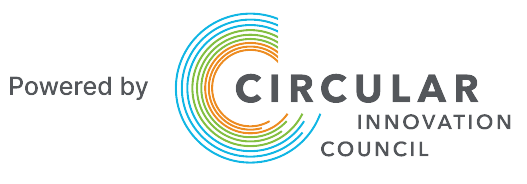PLastics
PLastics INdustry + Circular Economy
Circular Supplies
Supply fully renewable, recyclable, or biodegradable resources
Resource Recovery
Eliminate material leakage and maximize economic value of product return flows
In our current consumption and production pattern, 99 percent of sourced, manufactured, or transported materials are thrown away within six months. Plastics, which are particularly linear in the value chain, are concerning because products are typically designed for one-time use and then discarded. In Canada, approximately 98 percent of plastic waste is lost to disposal, which represents an economic loss of $7.8 billion. Globally, approximately 95 percent of the value of plastic packaging materials are lost because it is designed for single use.
The impacts of plastic are far-reaching. Studies have shown that 99 percent of seabirds, one in three sea turtles, and more than half of all whale and dolphin species have plastic in their stomach. In terms of the impacts on human health, more research is needed. However, what is known is that the most common forms of plastic, like polyvinyl chloride (PVC), are used to create indoor pipes and window frames, as well as polystyrene typically found in products like disposable cutlery and styrofoam packing, are possible.
Circular procurement allows reducing plastic waste and the impacts on nature and human health. In addition, including circular procurement criteria in tenders creates circular opportunities and innovative business models; and specifications and collaboration create market demand and ideal conditions for private sector organizations to develop products that include recycled and recyclable plastics.
EXAMPLE
How the Plastics industry Can Advance The Circular Economy
Companies worldwide recognize the importance of adjusting their business models and are actively engaging in innovative projects, either through product life extension, resource recovery, and circular supplies business models. Through collaborative partnerships, ocean plastics, for example, are recovered and repurposed into textiles and footwear. Other companies, through the innovative design of product packaging, are replacing fossil-based with bio-based materials to create sustainable packaging that is biodegradable and closed-loop.
Circular Supplies
Resource Recovery
JOIN US

Awareness of the negative effects of unsustainable consumption and production, and the link to the current linear economy of take-make-waste, is an important priority in today’s society. Governments, businesses, and communities worldwide realize the need to fundamentally and systematically shift patterns of production and consumption. The circular economy offers an alternative and reinvented economic model that is holistic in nature and drives economic prosperity while protecting the environment to benefit society.
We are on the cusp of the circular economy in Canada and collaboration is crucial to advance it.
For information on how to further align efforts to support greater circularity, a customized partnership proposal is available on request. Contact for more information.
